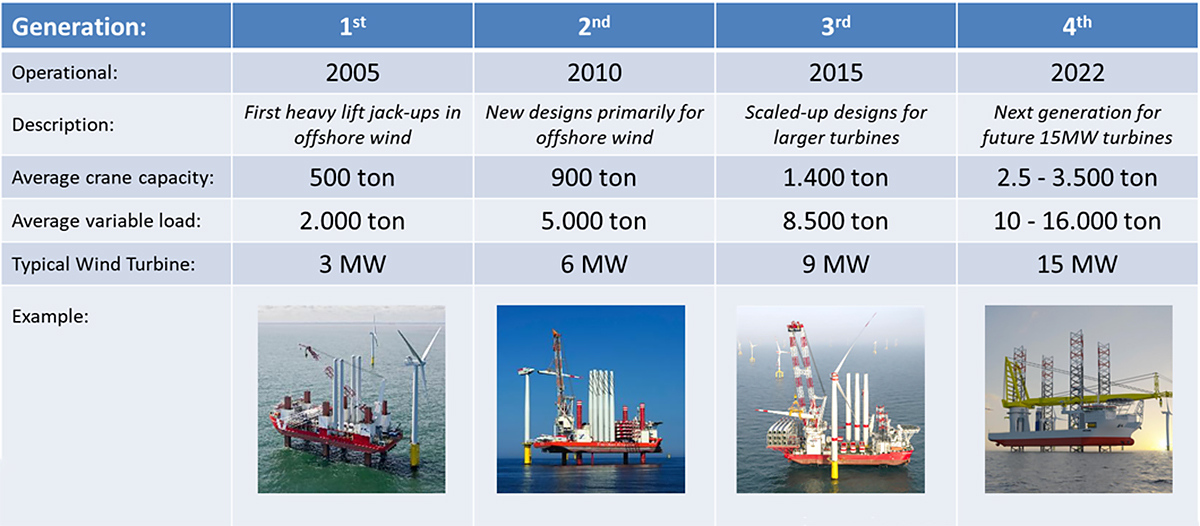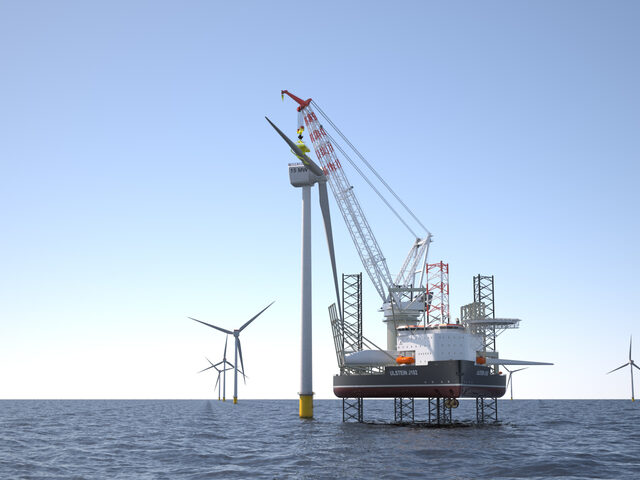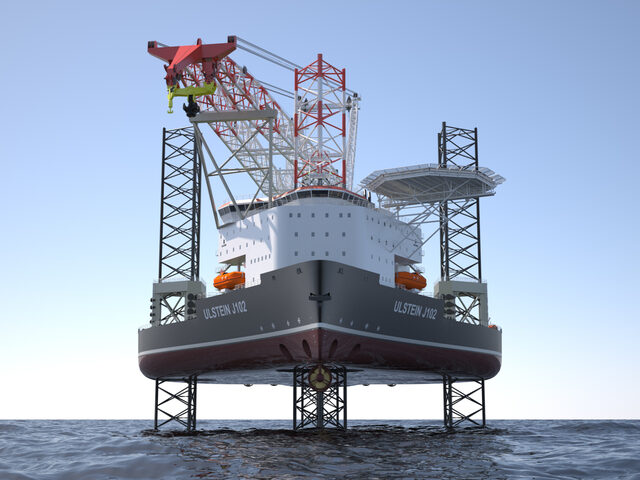Securing your future in offshore wind
With the dawn of the new 12MW offshore wind turbines, installation capacities of the current, third generation wind turbine installation vessels will be pushed to the limits and beyond. A new generation of jack-up vessels is necessary to serve the future offshore wind industry.
But how to develop an efficient jack-up with a healthy economic lifetime in the rapidly evolving offshore wind industry? Ulstein’s vast experience in heavy lift vessel designs, combined with its inhouse business analysis capabilities is used to develop the best solutions for our clients.
The development of wind turbine installation vessels (WTIV)
Following the early pioneering days of offshore wind, the second-generation installation jack-ups, specifically designed for wind turbine installation, started working in 2010. Originally intended to be the offshore wind installation vessel for decades to come, within a few years these vessels were caught up by the rapid growth in offshore wind turbines. Although some vessels were upgraded to cope with the higher lifting heights for the current 8MW wind turbines, the quicker than expected increase in turbine size means these second-generation wind installation vessels soon became less efficient tools.

Around 2015, the third generation of wind installation jack-ups became operational in answer to the rapid growth in wind turbine size. And although these vessels are a nice fit to the current generation wind turbines, they will be pushed to their limits by the new 12MW wind turbines expected in 2022. Like previous jack-up generations, it seems their viable economic lifespan again is reduced to just a single decade, rather than a more healthy 25 years.
Jan de Nul recently announced the construction of what can be reckoned as the first installation jack-up of the fourth generation, the ‘Voltaire’. With its size and lifting capacities, this huge vessel will be able to install the new 12 MW wind turbines and appears to be ready for the expected further growth in turbine size in the decade to come.
The big challenge is how to properly design the next generation jack-up. Making it only slightly larger than the current generation, and it might be obsolete within a few years. Make it too large and it may never be competitive in the market. So, how to nail the sweet spot?
Business case
As leading ship designers, Ulstein studies the market developments in offshore wind to gain insight in expected size of future wind turbines, which determines the design case for new installation vessels. But instead of the typical engineer’s reaction of jumping to the drawing board and sketch the ultimate installation unit for the largest wind turbine we could find, we created a business case tool to develop and evaluate multiple solutions. This tool shows which designs would be viable in the current and future market by calculating relevant performance parameters, including a.o. average installation time, cost per turbine and return on investment.
For turbine installations, we ran a wide range of business case analyses for different types and sizes of installation vessels and jack-ups. These analyses provided great insight in which technical solutions and jack-up sizes work well from a business perspective. Working with business models and studying the results enabled us to better understand the challenges of our clients. One of the interesting lessons is that ‘economies of scale’ does have its limits for wind installation vessels; the economic sweet spot is not necessarily the largest unit.
With the business case results we optimised and further developed our range of Ulstein wind installation jack-ups. Featuring lower steel weight, higher crane capacity and better operability, ULSTEIN’s X-JACK design clearly shows its benefits for a 15MW business case; cutting upto 25% in total installation cost in comparison to currently available jack-ups. Moreover, we have been able to optimise the main dimensions of the ULSTEIN J102 to be the most competitive solution in the market; both for the near future as well as for the next generation wind turbines envisioned in 2030.
Please contact us for more information
Cornerstone Building (6th floor)
Rotterdam Airportplein 32
3045 AP Rotterdam
The Netherlands

